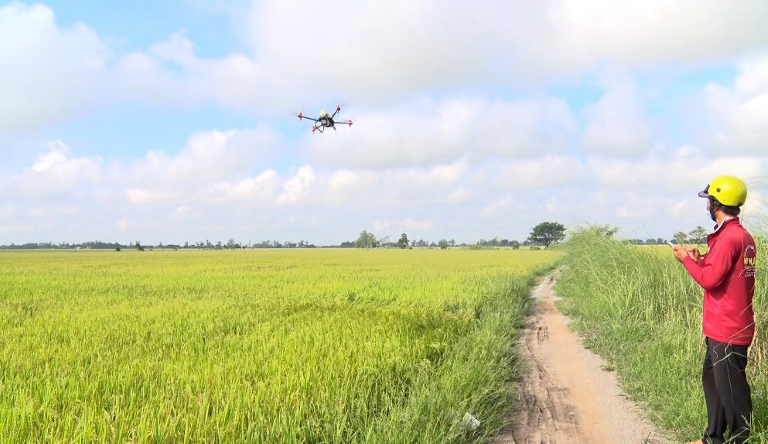The Mekong Delta is not just a hub for rice, fruit, and seafood production but also a region where Vietnam demonstrates a model of eco-friendly, innovative, and sustainable farming practices. It is a place where farmers convey a valuable message to the world: In times of climate instability, adaptation and innovation are the keys to long-term survival.
Transforming on the edge of survival
For decades, the Mekong Delta has been a fertile region that feeds millions of Vietnamese and supplies food to countries worldwide. Contributing 90% of Vietnam’s rice exports, 70% of its fruit, and 60% of its seafood, this land is not only a “rice bowl” and “fruit basket” but also the heart of national food security and a vital link in the global food supply chain. But now, that heart beats with anxious rhythms. Climate change is no longer a distant threat but a present reality, unfolding with every rising flood and each wave of drought and salinity intrusion.
The Mekong Delta is facing severe environmental challenges, including rising sea levels, salinity intrusion, land subsidence due to groundwater extraction, prolonged droughts, and unpredictable floods. Climate change has been, and continues to be, reshaping the way people live and produce in the region.
 Using drones to spray pesticides on the field.
Using drones to spray pesticides on the field. Changing for survival
Under the pressure of climate change, farmers have been compelled to collaborate with one another, businesses, and the government. Nearly 2,700 cooperatives in the region now serve as vital lifelines, helping to move agriculture away from outdated, fragmented, and small-scale practices.
The "One million hectares of high-quality, low-emission rice" project - an unprecedented initiative globally - is currently being implemented in the Mekong Delta. The project marks a turning point in Vietnam’s green development strategy, aiming not only for higher productivity but also emphasizing environmental sustainability, reducing greenhouse gas emissions, and protecting water and soil resources.
The project has garnered attention and support from international organizations and development partners, who are providing technical assistance, credit access, and market development support. After just one year of implementation, one of its most significant achievements is the profound shift in mindset and awareness, across both the political system and local communities, regarding Vietnam's sustainable development goals in the rice sector. Farmers' rice cultivation practices are gradually evolving toward higher value, lower emissions, and greater environmental protection. Several models have helped reduce pesticide applications by 1 to 4 times and cut irrigation water use by 30–40%, resulting in an average reduction of 2.0–12.0 tons of CO2 equivalent per hectare in greenhouse gas emissions. This progress is a powerful affirmation of Vietnam's commitment to "climate-smart" agricultural development.
In addition, the irrigation system—a vital lifeline for protecting crops in the face of climate change—receives comprehensive investment. In Can Tho alone, over VND 800 billion has been allocated to upgrade irrigation infrastructure, regulate water during the dry season, and control saltwater intrusion.
Towards a sustainable and green region
The Mekong Delta is gradually approaching demanding markets such as the EU, the U.S., and Japan, where standards go beyond food safety to include carbon emissions, traceability, and social responsibility.
In the face of climate change threats, the Mekong Delta is seeking to reinvent agriculture through long-term policies and a commitment to reducing emissions.
In the near future, by leveraging carbon financial mechanisms and free trade agreements, farmers in the Mekong Delta will be able to sell not only rice but also the "low carbon footprint" associated with each grain of rice. This new value could determine the survival of Vietnamese rice in the global market.